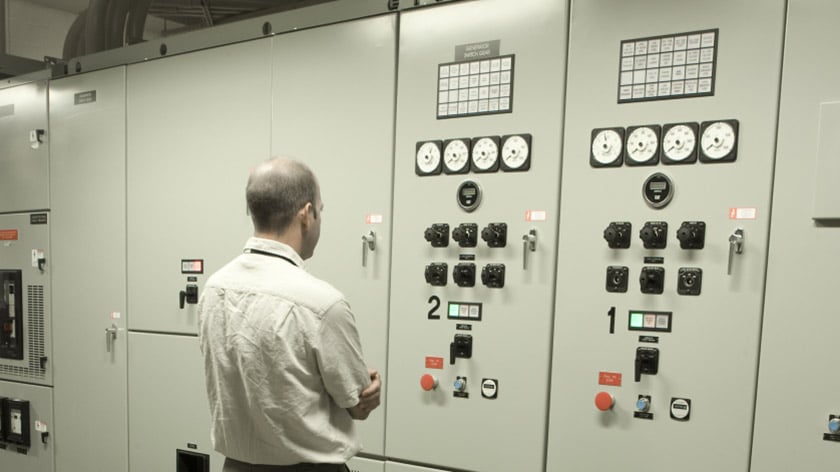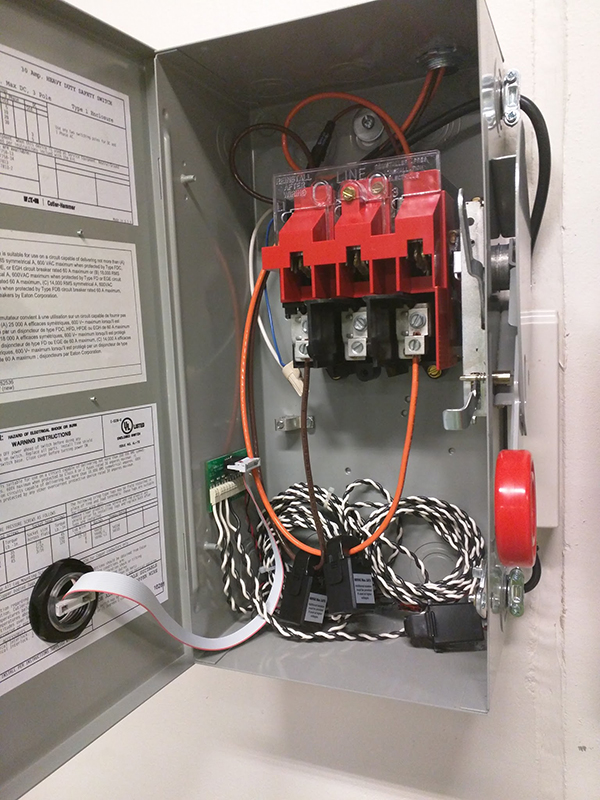Benchmark ESG Goals for Energy with Submetering
With the signs of climate change everywhere and energy prices widely expected to continue increasing, people are looking for more ways than ever to...
3 min read
![]() Packet Power Team
:
Mar 6, 2024 7:00:00 AM
Packet Power Team
:
Mar 6, 2024 7:00:00 AM

Retrofitting a multi-tenant building (or collection of buildings) with a wireless circuit monitoring system can pay for itself in less than a year. The ROI improves even more if your energy provider uses flex pricing and charges more for power during peak demand periods (sometimes as much 10X).
Here’s some example math to highlight your potential savings:
Studies show installing energy meters, allocating billing to tenants, and the power-usage changes made based on the newly-available data, typically saves end users between 15-45% off their energy bills. That’s between $20,000 and $60,000 in savings a year, which is comparable to the all-in cost for a wireless monitoring system retrofit of a building of this size. Then, once a system is in place, end users will continue to see similar savings for decades to come.
A U.S. Department of Energy study found submetering offered the quickest payback among all forms of energy conservation efforts. It found the ROI in most instances was just a few months.
|
Action |
Observed Savings |
|
Installing Meters |
0% to 2% The Hawthorne Effect (behavior change due to awareness of meters) |
|
Bill Allocation Only |
2.5% to 5% Improved Occupant Awareness |
|
Building Tune-Up Load Management |
5% to 15% Improved Awareness, Identification of Simple Operations and Maintenance Improvements, and Managing Demand Loads Per Electric Rate Schedules |
|
Ongoing Commissioning |
15% to 45% Improved Awareness, Ongoing Identification of Simple Operations and Maintenance Improvements, and Continuing Management Attention |
Expected energy savings from utility metering, source www.energy.gov.
Along with enabling bill allocation to tenants, a solution like Packet Power’s monitoring system provides real-time and historical data. This makes benchmarking possible and lets building operators track the impact of their energy-saving actions.
For instance, take the example of a former high school building in Sioux Falls, South Dakota that was remodeled to be an auditorium and office space. After the remodel, the building was constantly surpassing its peak energy allotment and being hit with extra charges for energy every day.
Within 24-hours of Packet Power’s multi-circuit monitors being installed, it became clear the problem was the HVAC compressors in the auditorium. The building managers changed how the HVAC system operated and cut their energy bill by almost 50%. They then went to the utility company and got an additional rebate because they could demonstrate the peak demand shaving they achieved through their operational changes.
Not all submetering solutions are the same. A system that communicates data wirelessly, doesn’t require complex field configuration, can operate on any manufacturer’s electrical equipment, has a small footprint, and is scalable so sensors can be moved or added seamlessly in the future is the ideal. These features will cut down significantly on the time and cost of installing a system, and make data the most easily accessible.
Packet Power’s solutions are designed to be quick and easy to install. The sensors each automatically communicate to a network-connected central gateway on a secure, proprietary wireless mesh network, so there are no cables to run. The software allows someone to look at a single screen and see all their data points in a building, on an entire campus, or anywhere in the world. An operator can then spot positive trends in one location and replicate whatever energy-saving action they took in all of their buildings. In addition, building owners will have visibility into whether or not they’ve lost power, and whether back-up power supplies like generators have turned on.
Packet Power sensors don't leverage consumer grade protocols (i.e WiFi), they don't require an IP address for each sensor, and they start reporting readings as soon as they are powered up—they are truly plug-and-play. Plus, since Packet Power’s solutions are vendor-agnostic and custom-built for each customer’s needs there is no need to worry about whether or not the sensors will work with the electrical equipment in any given building.
Along with saving money, submetering systems can help with ESG goals like LEED certification, ENERGY STAR, ISO 50001, and sustainability targets. Plus, more and more states are enacting green regulations and laws that include hefty fines if large energy users are not able to track their kWh and show they’re decreasing their usage over time.
For example, in New York Local Law 97 applies to any building over 25,000 square feet. So grocery stores, big box retailers, hospitals, indoor growing facilities, manufacturers, colleges, and many other industries will need monitoring systems to show they’re complying with the law.
Developers and general contractors who want to future-proof their buildings should also consider the scalability of the metering systems they are speccing and initially installing in new builds. In addition, Packet Power’s centralized manufacturing and close relationships with key suppliers and partners have enabled them to sustain sufficient inventory and offer industry-leading delivery times throughout the global supply chain challenges.
If you have any questions about how Packet Power’s solutions can be retrofitted into your buildings or want to discuss offering them in your new construction, contact our team and we’d be happy to help you.

With the signs of climate change everywhere and energy prices widely expected to continue increasing, people are looking for more ways than ever to...

You don't know the future cost of energy (otherwise you'd probably be cornering the energy futures markets right now). But it's a safe bet energy...

The Midwest region of the United States experiences a wide temperature range from -30°F (-34°C) in the winter to over 110°F (45°C) in the summer....